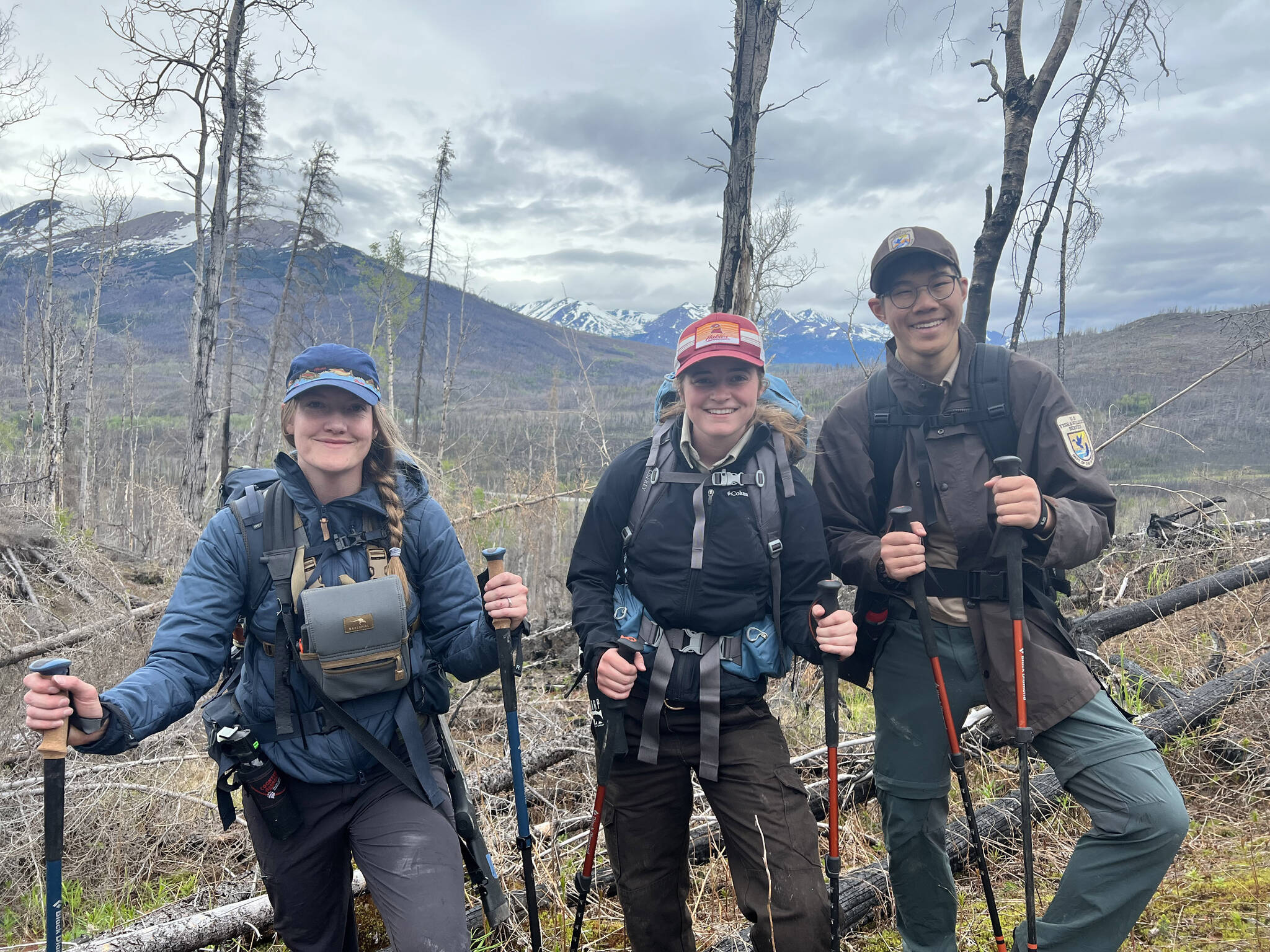Dozens of Dall sheep pellets pelted my face like hail on a windshield. A celebratory selfie, finished off with “confetti” after a long day of bushwhacking, rock scrambling and collecting scat samples had turned into an unforgettable experience.
I had spent the past few days with the Kenai National Wildlife Refuge biology team, trekking through mountainous terrain and learning how sheep respond to the changing habitat conditions in the Swan Lake fire area.
It is hard to believe that just a month ago, I was living in Singapore, a metropolitan city-state in Southeast Asia. Having lived there for the past five years — spending most of my time indoors — Alaska has been a whirlwind of new experiences.
And with every new project that I spend time on, I learn something new and exciting. To think that all this started with a single inquisitive email might be insane, but somehow it happened.
Invasive species week went like a blur. Aided by the information provided by the biology team here at the refuge, I created and led an exploration room over the course of two days.
With two species in mind — pike and elodea — I had set out to create an educational exhibit filled with interactive activities to help explain the dangers of invasive species. The words CLEAN, DRAIN, DRY — the mantra of stopping aquatic invasive species — will forever be ingrained in my mind.
My firsthand experience taking E-DNA (environmental DNA) samples made explaining the process of surveying for pike on the peninsula exciting. A couple of days prior, I had been carefully donning gloves, collecting particulate matter and preparing the samples for shipping to a laboratory. These samples would use new technology, environmental DNA, to help determine the presence of pike in the lake.
Pike, an invasive predatory fish introduced by anglers to the Kenai Peninsula, has the potential to decimate local populations of salmon by preying on salmon fry. Therefore, it’s important to contain them to their native range and remove them from the peninsula.
Speaking of salmon, my opportunity to collaborate with the fisheries office was invigorating. Setting up the trap on the back of the Funny River fish weir was an experience I will not forget.
Wearing a dry suit and standing in swiftly moving water, we carefully maneuvered the heavy trap into position. The trap would later be used to corral fish to help determine the age, sex and length of chinook, or king, salmon by taking measurements and samples.
A week later, I headed back to the trap. Sitting on a ledge with my feet dangling over the side, I watched in awe as giant fish after giant fish was scooped up with a net. After snapping back to reality, I carefully placed fin samples in a preservation solution while also assisting in cleaning and laying the scales in a neat order.
The scales would later be placed under a microscope and used to identify the age of the fish. Much like how the rings of a tree determine its age, the scales of a fish do as well. A couple of light rings paired with a darker ring signified that a year had passed.
Easy as that sounds, the rings seemed to mesh together like a herd of zebras running wild. This project of collecting samples and data is invaluable as it allows biologists to determine the health of the salmon population and essentially create a family tree using the genetic lineage of each fish.
Finally, the program I was hired under, the Youth Conservation Corps. Arguably, I have not had the most traditional YCC experience because I spent most of my time with different departments. But in a sense, that is exactly what the YCC crew does.
They fill in the gaps and help complete projects that would not have been completed — for example, the Emma Lake Trail upkeep project off of Tustumena Lake. The YCC crew and I, alongside the trail crew and a few others, had a four-day spike camp during which we worked on maintaining this hunting trail. While clearing trails may seem like a simple task, it is truly not.
Many factors help determine what is done and what is not. For example, classifying the trail helps determine how much of a pathway is cleared. In the case of the Emma Lake Trail, a wilderness feel was what we wished to achieve.
So, we brushed it to a minimum and even muddied the stumps to hide our work. And after work, as night fell, we sat by the fire listening to the loon calls and watching the trumpeter swans fly by.
As the summer and my time here draws to a close, I reflect upon the lessons I have learned and the experiences I have had. I’m thankful for all of them.
I realize that this unique opportunity of spending my summer here has empowered me with the necessary skills and knowledge to contribute to the environmental movement now and in the future. Perhaps someday my journey will lead me back here to the peninsula, and more specifically the Kenai National Wildlife Refuge.
Ryan Chen is a Refuge Intern for the Kenai National Wildlife Refuge. You can find more information on the Refuge at http://kenai.fws.gov or http://www.facebook.com/kenainationalwildliferefuge. Also, look for Refuge Notebook Articles on the first and third Fridays of each month or Find past Refuge Notebook articles (1999–present) at https://www.fws.gov/kenai-refuge-notebook.

